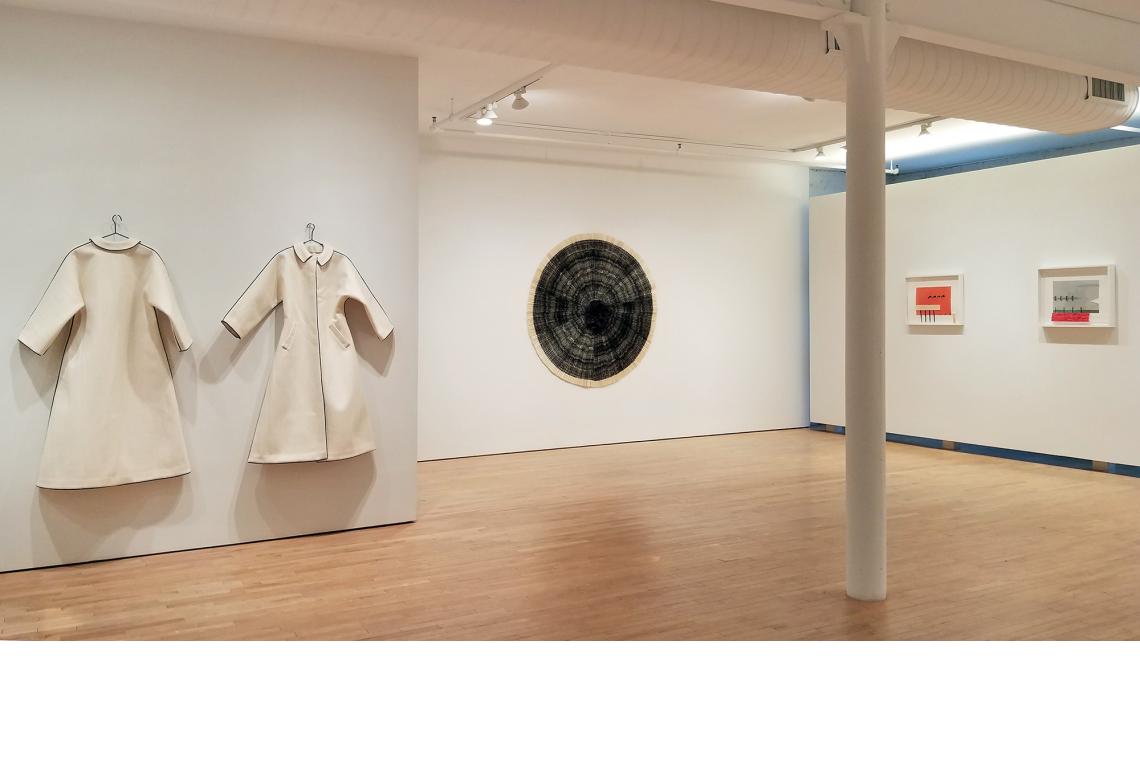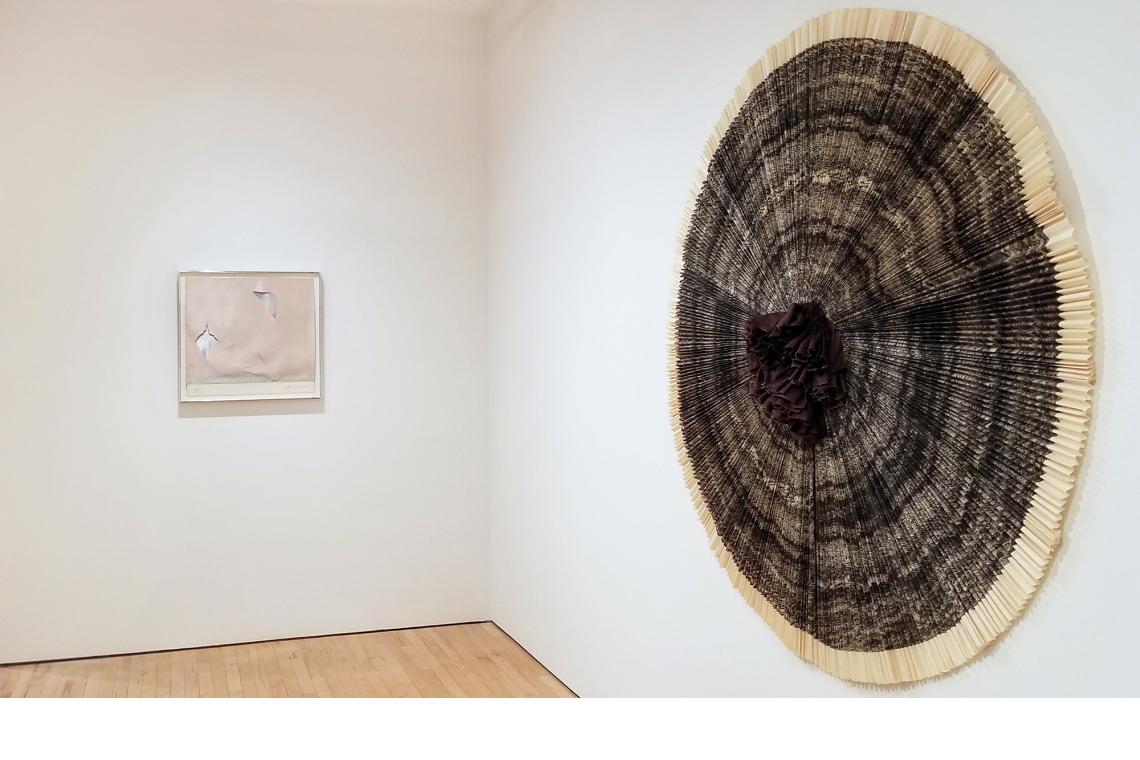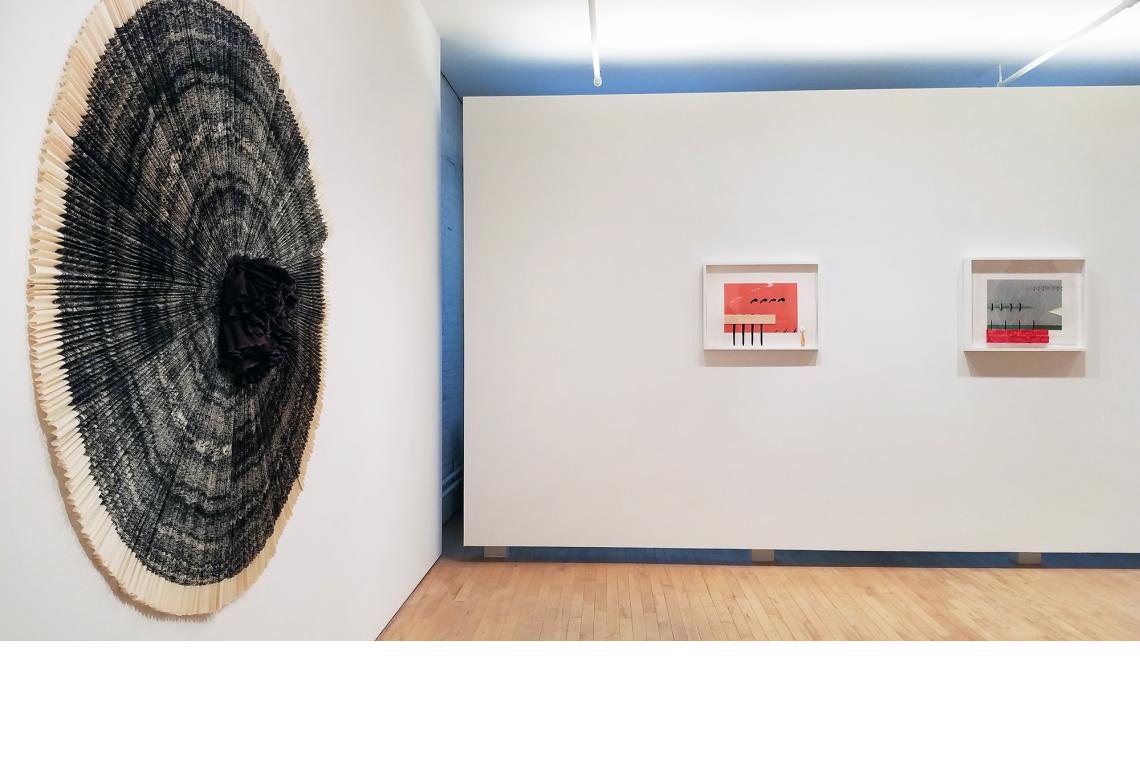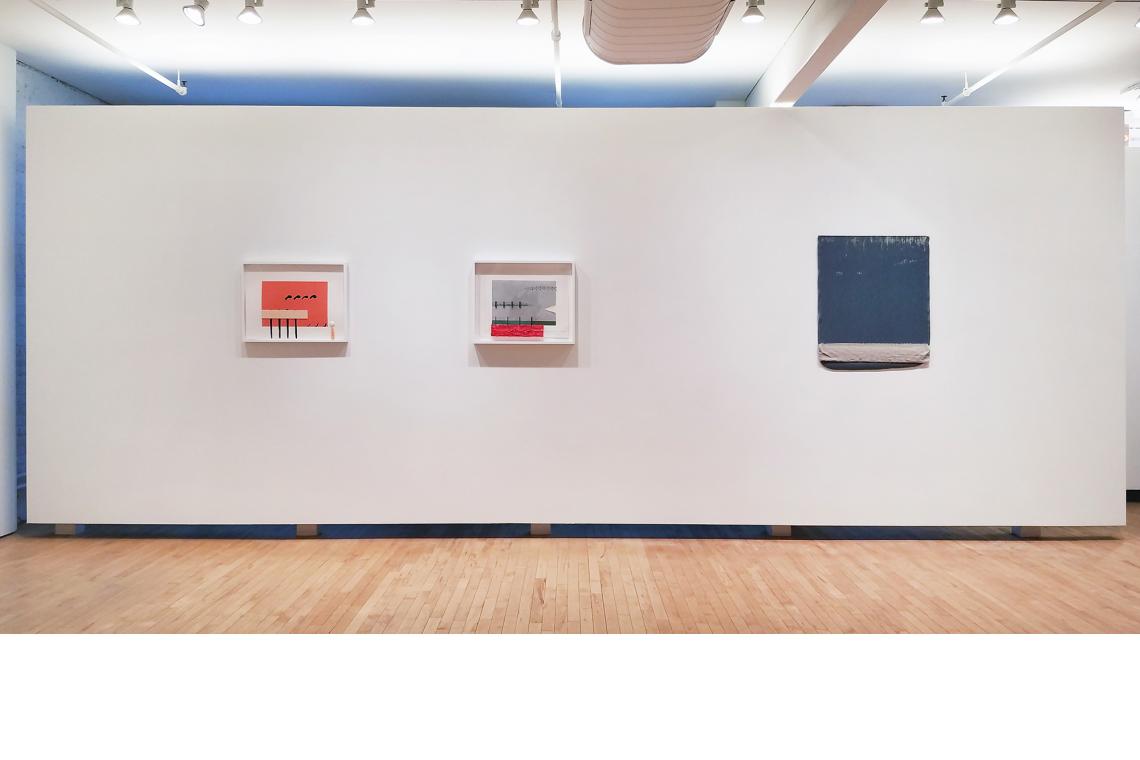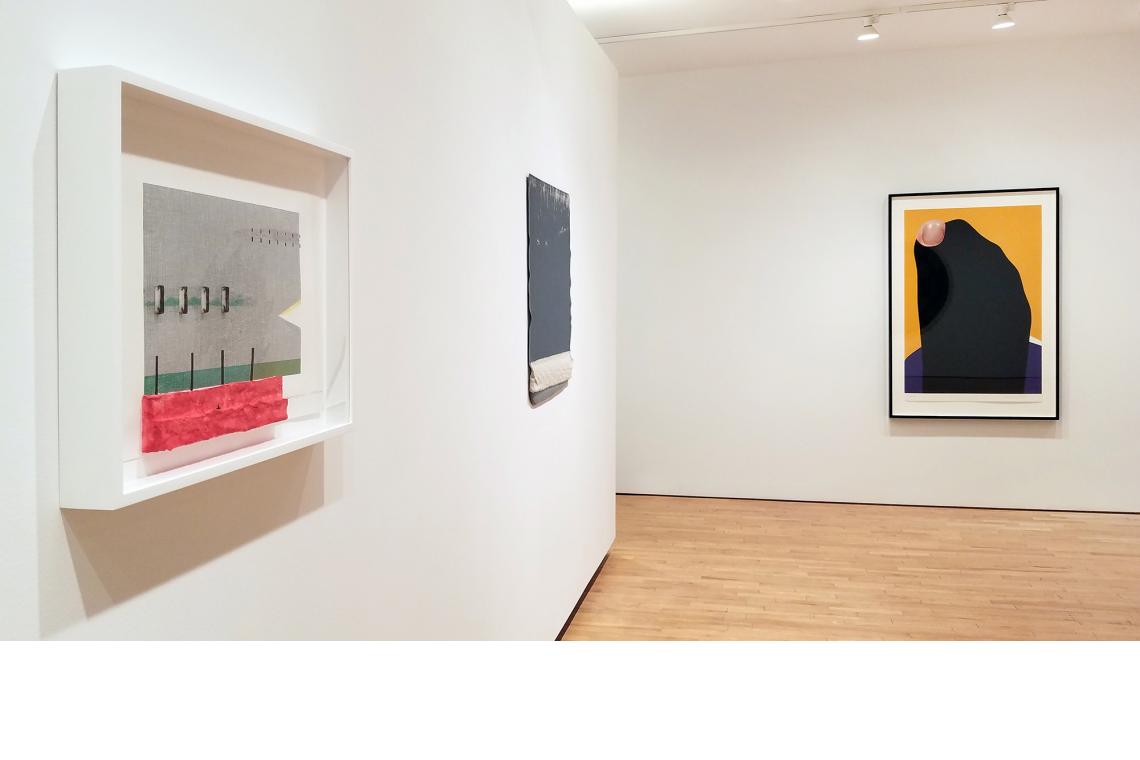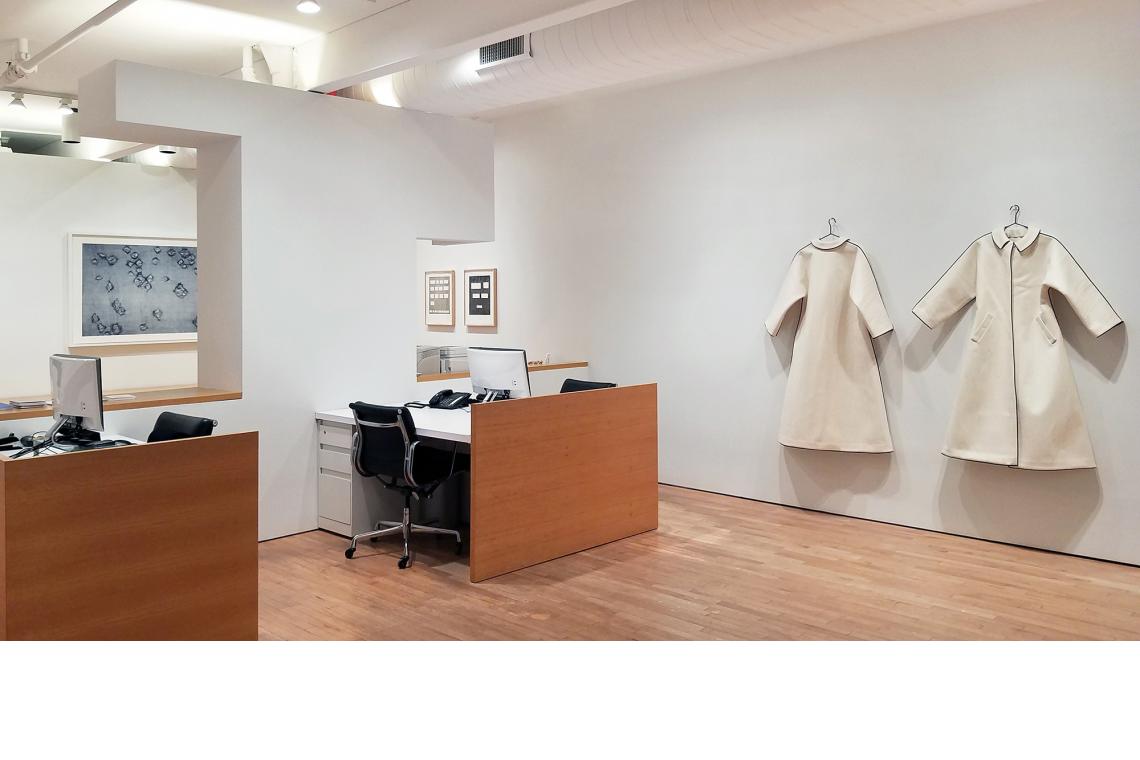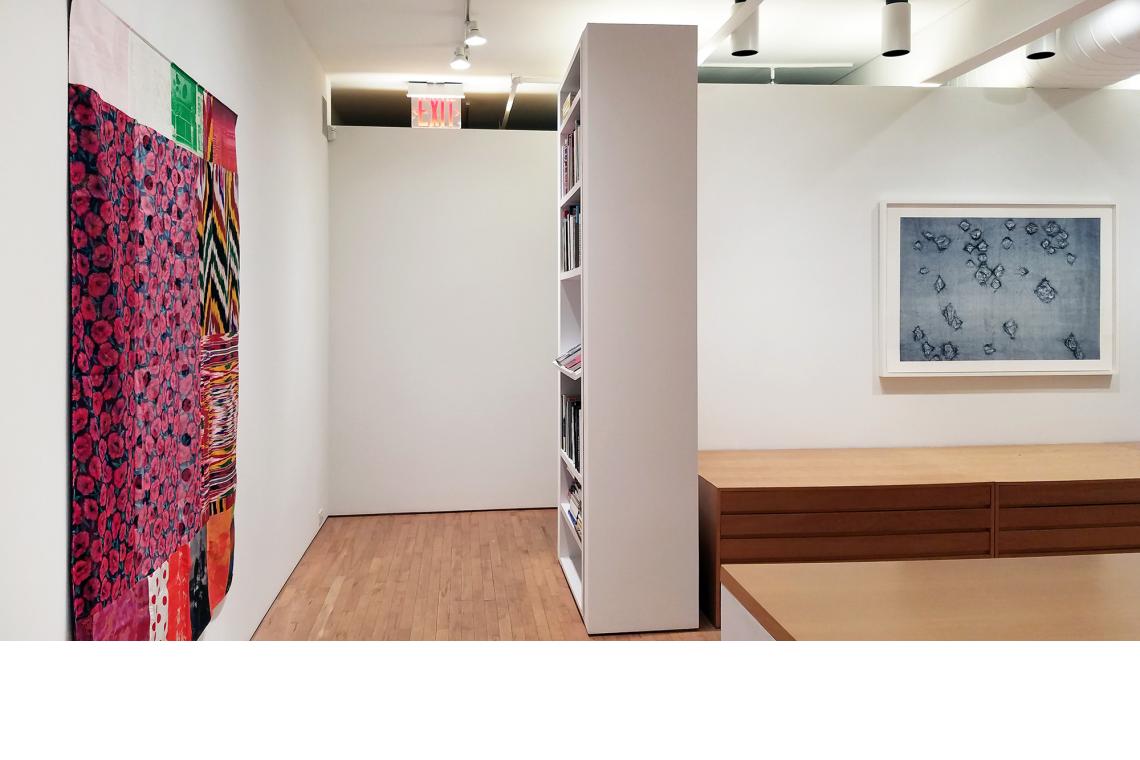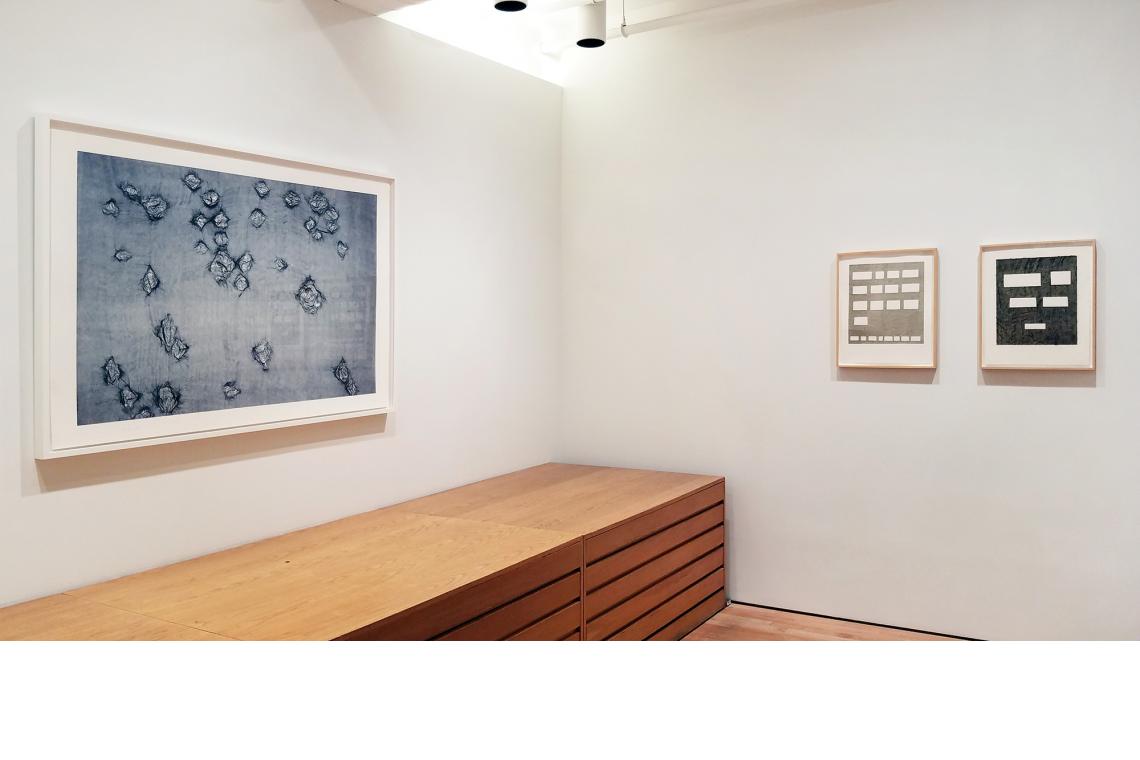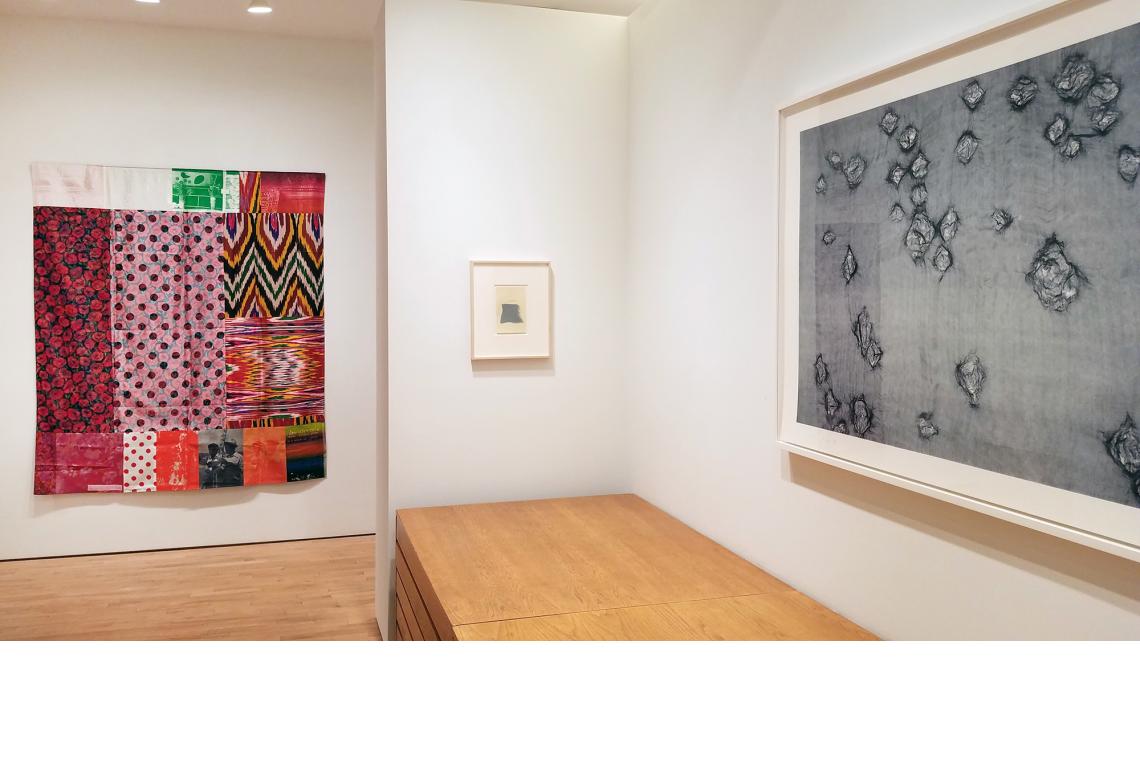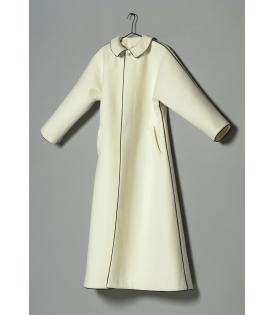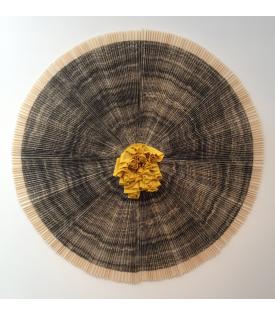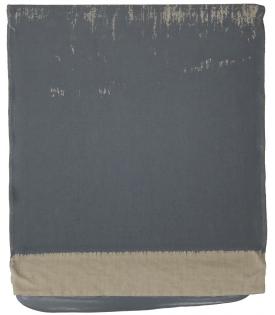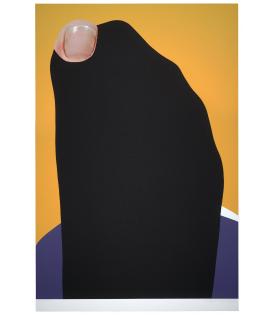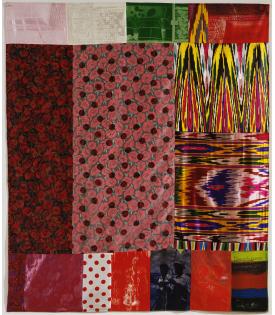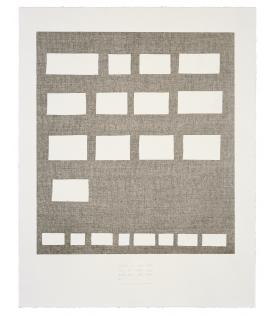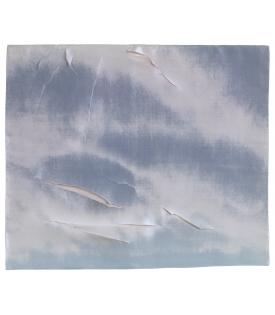That relation between the thread and the written line and the drawn line is about a really fundamental act of making, that the relation of the line that makes something is related to how we make things with language. -Ann Hamilton
Art is a creation for the eye and can only be hinted at with words. –John Baldessari
Gemini G.E.L. at Joni Moisant Weyl is pleased to announce two concurrent exhibitions in our Chelsea gallery that highlight the relationship between text and textiles: Warp & Weft: A History of Fabric at Gemini G.E.L., featuring artists who use various forms of cloth in their editions; and We are the language, presenting a range of prints and sculpture multiples that feature the written word. A third exhibition, the complete series of Jasper Johns’ Fragment—According to What from 1971, is also on view through April 28, 2018, in our Project Space.
The word ‘text’ is derived from the Latin ‘textere,’ which translates as “to weave, to join, fit together,construct.” The two concurrent exhibitions forge a relationship between the textile and the textual, assentences are woven into the visual, and fabrics become visual metaphors.
Warp & Weft is a diverse exhibition that focuses on artists who have incorporated textiles into their edition- making practices. Fabric is a part of daily life, ranging in use from the clothes we wear to the furniture we sit on, and it also supports artists’ application of paint. Analia Saban, however, scrambles the artistic vernacular of painting, sculpture and printmaking by using a roller to press acrylic paint through a linen bag, reversing the roles of canvas and paint—here it is the paint that supports the canvas. A canvas of sorts, this time urethane-coated nylon, makes an appearance in John Baldessari’s Foot & Stocking series, accompanying screenprinted imagery derived from photographs taken of the bare right foot of his studio staff, giving the look and texture of a holey sock. In Cityscapes, Ed Ruscha playfully places ‘censor strips’ over lithographed imagery such as canvas or linen, merging them into one pictorial element. Interestingly, the serene, cloud-like imagery of Joe Goode’s Wash and Tear Series is the result of his scratching and ripping away the top layer of baby-pink fabric to reveal a second layer of light-blue fabric behind. Robert Rauschenberg’s Samarkand Stitches are the result of his 1988 visit to Uzbekistan, and they combine traditional ikat textiles with the artist’s photographs taken as he traveled that region. Richard Tuttle, known for sculptures made of ephemeral and humble materials, includes subtly chine colléd cotton gauze over the printed areas of his “Pacific Seriously” edition. And finally, four remarkable artworks by Ann Hamilton, including the print which inspired the title for this exhibition, are on view. Hamilton is a master of threading social metaphors into her artmaking endeavors, and warp & weft and shell (both from 2007), in addition to ciliary (2010) and one example from her 2017 body of work, Pages, all demonstrate her wide-ranging engagement with textiles.

